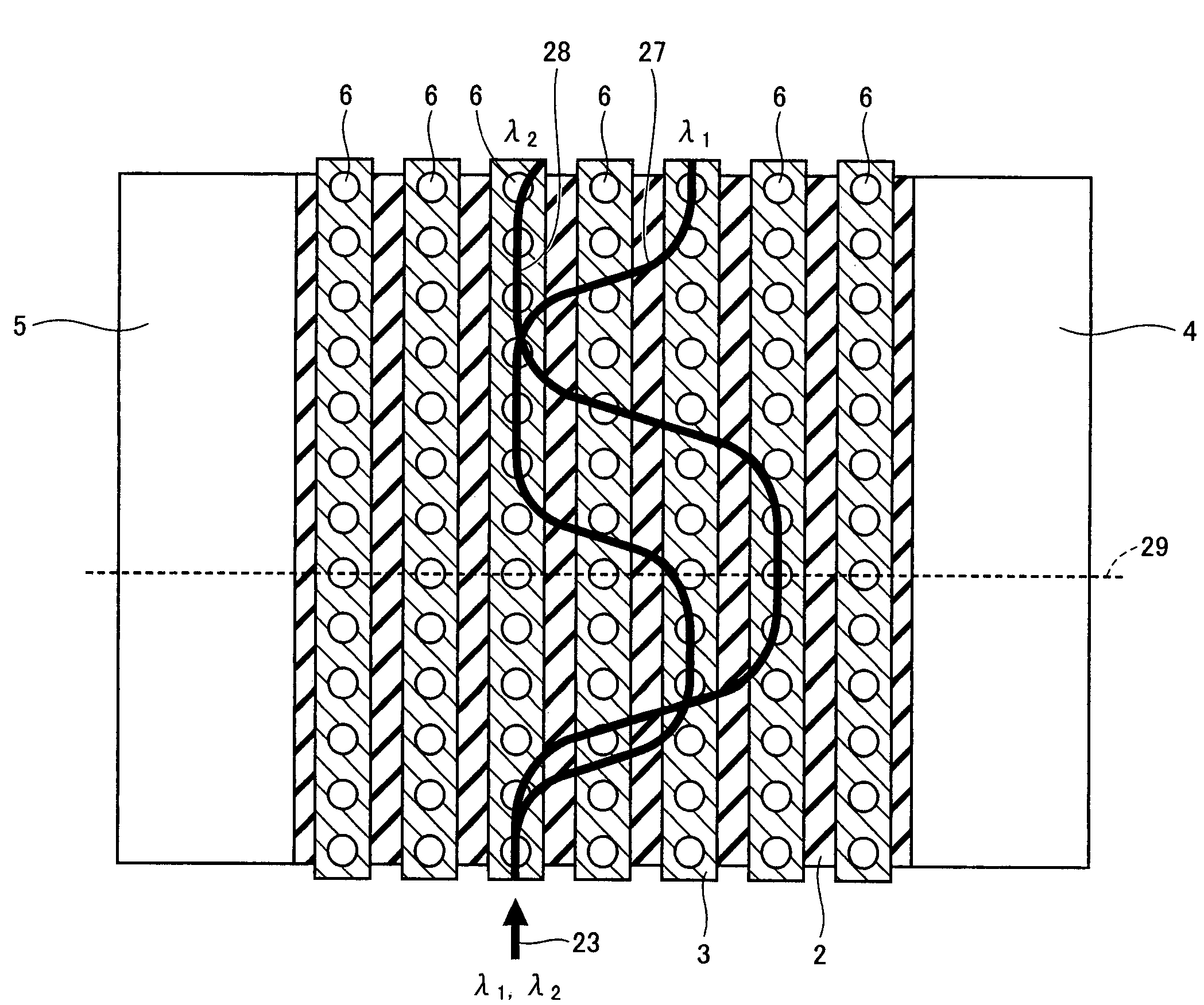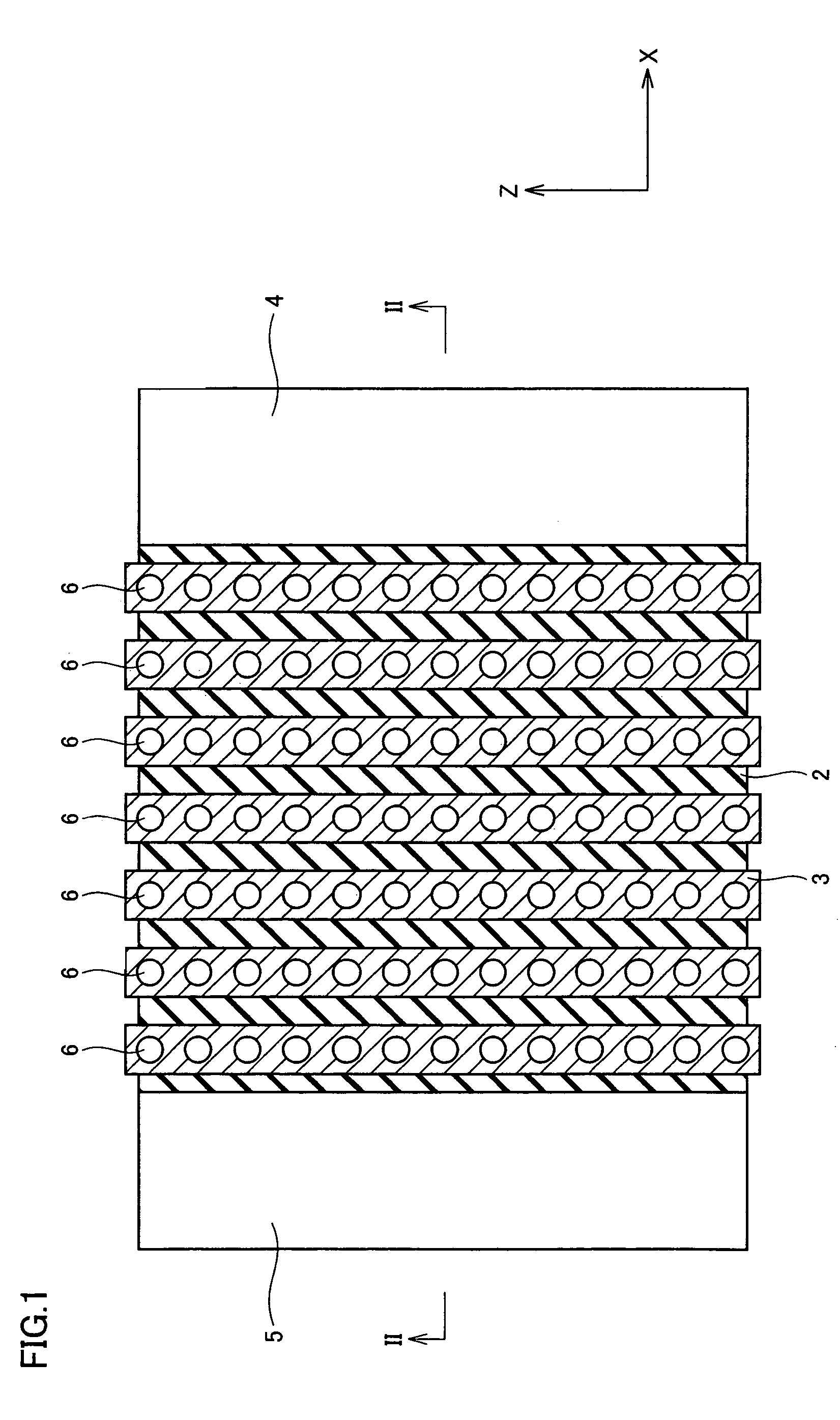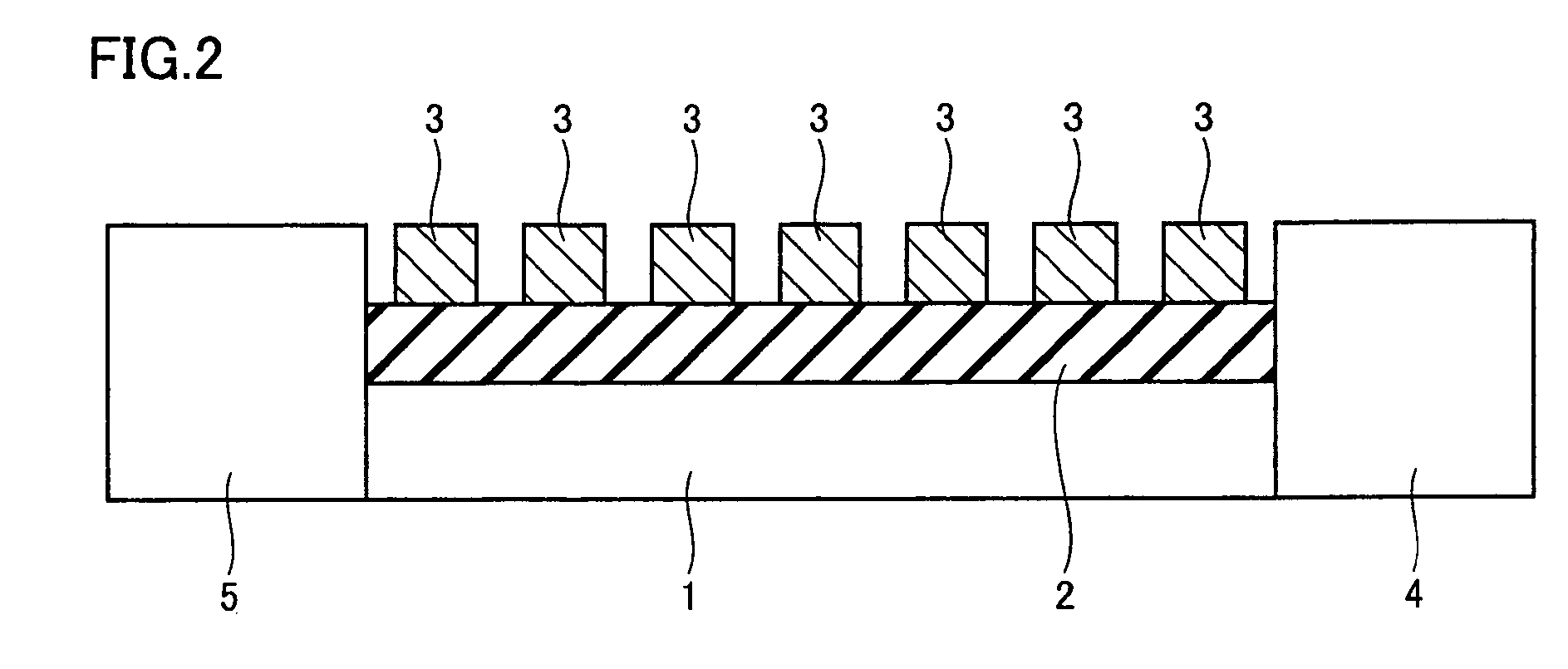Variable demultiplexer
a multi-layer, variable technology, applied in the direction of instruments, optical waveguide light guides, optical elements, etc., can solve the problems of low yield, prone to bad productivity, and the prior art already described suffer from the following problems, so as to improve yield and stable characteristics, reduce the size of an element, and improve the effect of yield
- Summary
- Abstract
- Description
- Claims
- Application Information
AI Technical Summary
Benefits of technology
Problems solved by technology
Method used
Image
Examples
first embodiment
[0046]Referring to FIGS. 1 and 2, a first embodiment of a small variable demultiplexer according to the invention will now be described.
[0047]A small variable demultiplexer shown in FIGS. 1 and 2 is formed of a Si photonic wire waveguide array using an SOI (Silicon On Insulator). As shown in FIG. 2, an SiO2 layer 2 is arranged over a silicon substrate 1. A plurality of Si photonic wire waveguides 3 formed of an upper silicon layer 13 (see FIG. 3) are formed on SiO2 layer 2. The plurality of Si photonic wire waveguides 3 are parallel to each other, and extend in a Z-axis direction as can be seen from FIG. 1. The plurality of Si photonic wire waveguides 3 are spaced by a predetermined distance in an X-axis direction from each other, and are arranged in a discrete (cyclic) fashion. Thus, the plurality of Si photonic wire waveguides 3 are formed parallel to each other with substantially uniform spaces therebetween. A heater 4 and a heat sink 5 are connected to end surfaces, which are lo...
second embodiment
[0077]Referring to FIGS. 16 and 17, description will now be given on a second embodiment of the small variable demultiplexer according to the invention.
[0078]A small variable demultiplexer shown in FIG. 16 includes silicon substrate 1, SiO2 layer 2 formed on silicon substrate 1, the plurality of Si photonic wire waveguides 3 formed on SiO2 layer 2 and forming the waveguide array, and electrodes 74 formed on Si photonic wire waveguides 3. Si photonic wire waveguide 3 has substantially the same structure as Si photonic wire waveguide 3 in the small variable demultiplexer shown in FIG. 1. Each electrode 74 is provided with empty holes 6 reaching the lower surface of Si photonic wire waveguide 3. In FIG. 16, the traveling direction of the light is the Z-axis direction, a direction perpendicular to the extension direction of Si photonic wire waveguide 3 is the X-axis direction, and a direction of thickness of Si photonic wire waveguide 3 (i.e., direction perpendicular to the main surface...
third embodiment
[0082]Referring to FIGS. 18 and 19, description will now be given on a third embodiment of the small variable demultiplexer according to the invention.
[0083]A small variable demultiplexer shown in FIGS. 18 and 19 has substantially the same structure as the small variable demultiplexer shown in FIGS. 1 and 2 except for that widths W1-W7 of Si photonic wire waveguides 83, diameters of empty holes 6a-6g and spaces L1-L6 between neighboring Si photonic wire waveguides 83 are not uniform. Referring to FIG. 18, as the position moves in the X-axis direction from one end of the waveguide array on the left side in FIG. 18 toward the other end, the width (W1-W7) of Si photonic wire waveguide 83 and the diameter of empty hole (6a-6g) gradually increase. Also, the foregoing space (L1-L6) gradually decreases as the position moves in the X-axis direction from the left end toward the right end in FIG. 18. This structure of the waveguide array formed of Si photonic wire waveguides 83 is referred to...
PUM
 Login to View More
Login to View More Abstract
Description
Claims
Application Information
 Login to View More
Login to View More - R&D
- Intellectual Property
- Life Sciences
- Materials
- Tech Scout
- Unparalleled Data Quality
- Higher Quality Content
- 60% Fewer Hallucinations
Browse by: Latest US Patents, China's latest patents, Technical Efficacy Thesaurus, Application Domain, Technology Topic, Popular Technical Reports.
© 2025 PatSnap. All rights reserved.Legal|Privacy policy|Modern Slavery Act Transparency Statement|Sitemap|About US| Contact US: help@patsnap.com



